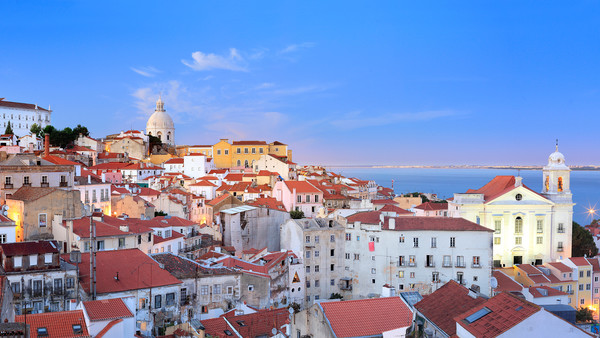LISBONA - VIAGGIO DI GRUPPO - ULTIMI GIORNI PER UNIRSI - 9-12 GIUGNO
 Ho appena comprato il biglietto di andata per Lisbona - Viaggio Esplorativo di Gruppo 9-12 giugno (non ho comprato il biglietto di ritorno...)
Ho appena comprato il biglietto di andata per Lisbona - Viaggio Esplorativo di Gruppo 9-12 giugno (non ho comprato il biglietto di ritorno...)
vi lascio a questo articolo del GRANDE BLUFF e vi rimando al mio precedente per maggiori dettagli..IL VIAGGIO A LISBONA PER INFO O PRENOTAZIONI:
mail mercatiliberi@gmail.com
telefono: 335.6651045
ULTIMI GIORNI PER UNIRVI A QUESTO FANTASTICO GRUPPO DI FUTURI AMICI
QUI DI SEGUITO L'ARTICOLO DEL FINANCIAL TIMES DI OGGI SU LISBONA:
WHY LISBON HAS A LOT OF POTENTIAL - FINANCIAL TIMES
WHY LISBON HAS A LOT OF POTENTIAL
May 13, 2016 12:13 pm
The Portuguese city’s crumbling period residences are being redeveloped to feed demand from western European buyers
 ©Paolo Giocoso/SIME/4Corners Images
©Paolo Giocoso/SIME/4Corners Images
Lisbon’s Alfama district, with the Church of São Vicente de Fora in the background
The appetite for rejuvenation has affected the residential market too. Period homes that had been abandoned and were crumbling away as wealthy Portuguese moved into modern houses with better facilities in suburbs, such as Estoril and Cascais, are now among the most sought after in the capital.

The roof terrace and pool at Liberdade 71, where four-bedroom duplexes are priced €3.5m
Stone Capital has 12 developments under way, including several in the central Chiado district and others on Avenida Liberdade, often referred to as Lisbon’s Champs-Elysées thanks to its upmarket shops. At Liberdade 12, a late 18th-century property is being converted into 27 apartments with underground parking, gardens and terraces. Three-bedroom flats are being sold there off plan from €1.8m.
 ©Teresa Rosas/Getty Images
©Teresa Rosas/Getty Images
Lisbon in spring
“The property market in Lisbon only started to develop a buzz in 2014, but it’s in the last six months that we’ve seen a big rise in numbers of investors,” says Roman Carel, Athena’s founder. According to the company’s own research, prices in prime locations in Lisbon rose 22 per cent in 2015, while inquiries jumped 30 per cent in the first quarter of this year.

Five-bedroom apartment in Lapa, €1.1m
According to local agents, most buyers are based in western Europe, in particular French, Swiss and Swedish investors, who are buying property in Portugal because of the country’s tax-friendly non-habitual residents (NHR) programme. This offers people who are moving to the country for the first time reduced tax rates or tax exemption for 10 years on certain income. “The NHR scheme is attracting European executives, who are moving here with their families,” says Frédéric Desage-Bonnet, of developer Ran Capital. In his experience, buyers tend to be aged between their late 30s and late 40s. “It’s not the over-65s,” he says. In Lisbon, Ran Capital is redeveloping Sacramento 28 in Chiado, where a three-bedroom apartment is priced, off plan, at €1.85m.
 ©Paul Bernhardt/Getty Images
©Paul Bernhardt/Getty Images
Ice-cream seller in Praça do Comércio
While sales are up in the centre, outer areas — especially those linked to the domestic market — are still suffering. Unemployment is falling but remains high, hovering at about 12 per cent, and home prices in some areas are still 10 per cent below their pre-crisis peak.
 ©Danita Delimont/Getty Images/Gallo Images
©Danita Delimont/Getty Images/Gallo Images
Trams in Bairro Alto
Buying guide

● Prices across Portugal increased by 3.66 per cent year on year in January 2016 to an average of €1,047 per sq metre
● Lisbon prices average €2,464 per sq metre, rising to €6,000 per sq metre for prime city-centre developments
● Buyer taxes and stamp duties add up to about 15 per cent of the sale price
● Developers and agents cite rental yields of 5 to 7 per cent on short-term lets and 3 to 4 per cent on longer-term lets

Three-bedroom apartment at Sacramento 28 in the Chiado district, €1.85m
What you can buy for . . .
€350,000 A one-bedroom apartment in Lisbon’s embassy district€1.2m A three-bedroom apartment with a terrace and river views in the heart of the old city
€3.5m A penthouse apartment with a balcony and rooftop pool on Avenida Liberdade, the premier shopping area

Three-bedroom duplex, São Vicente, €1.6m
More listings at ftpropertylistings.com
Lisbon: tiles ahead
When the 1755 earthquake destroyed most of Lisbon, the seismic shock was so extreme it generated a tsunami that reached the Caribbean, writes Melissa Lawford. It also began a revolution in the city’s architecture.Azulejos, the brightly glazed ceramic tiles first brought to Portugal in the 16th century by the Moors, originally only decorated palaces. But they were cheaper than stone. After the earthquake, demand for cost-effective materials rose rapidly and Lisbon quickly became a radiant mosaic.
Originally a roof-tile factory, Sant’Anna was soon making nothing but azulejos. Although it is 275 years since the company was founded, electric kilns are the only innovation it has introduced in that time. The clay is shaped, air-dried and then fired at 1,100C before it can be painted. Sant’Anna workers use the Dutch majolica technique, hand-painting designs over a white-glaze background. Many of the company’s 45 artisans have been working there since leaving school. “It’s like they breathe tiles,” says Francisco Tomás, the sales manager.
Azulejos spread across the globe with the Portuguese empire and can today be found adorning buildings from Brazil to Macau. While other aspects of colonial legacy fade, “the tile will be the links of Portuguese government all over the world”, says Tomás. Sant’Anna is now working on a number of global restoration projects, including a school in Angola. Along with government money, Sant’Anna’s Portuguese public-sector work dried up during the recession but the company was not hit hard, Tomás says. It caters primarily to private clients and exports 85 per cent of its tiles.
Tile-maker Viúva Lamego, founded in 1849, also maintains traditional techniques but since the 1930s has focused on working with contemporary artists. Their tiles decorate Maria Keil’s bold murals in Lisbon — the work often credited with rejuvenating the azulejo as a modern art form.
 ©Jean-Pierre Lescourret/Getty Images
©Jean-Pierre Lescourret/Getty Images
The azulejo-tiled Palácio dos Marqueses de Fronteira in Lisbon
LISBONA - VIAGGIO DI GRUPPO - ULTIMI GIORNI PER UNIRSI - 9-12 GIUGNO
Iscriviti a:
Commenti sul post (Atom)








1 commento:
http://www.zerohedge.com/sites/default/files/images/user3303/imageroot/2016/05/12/20160514_COTD_0.jpg
Posta un commento